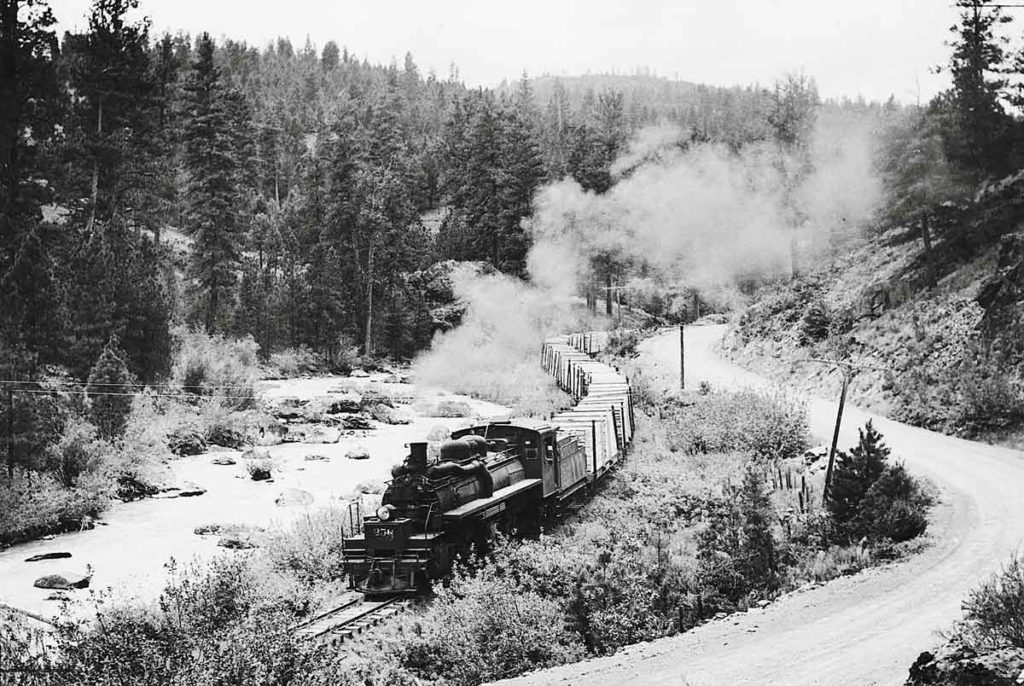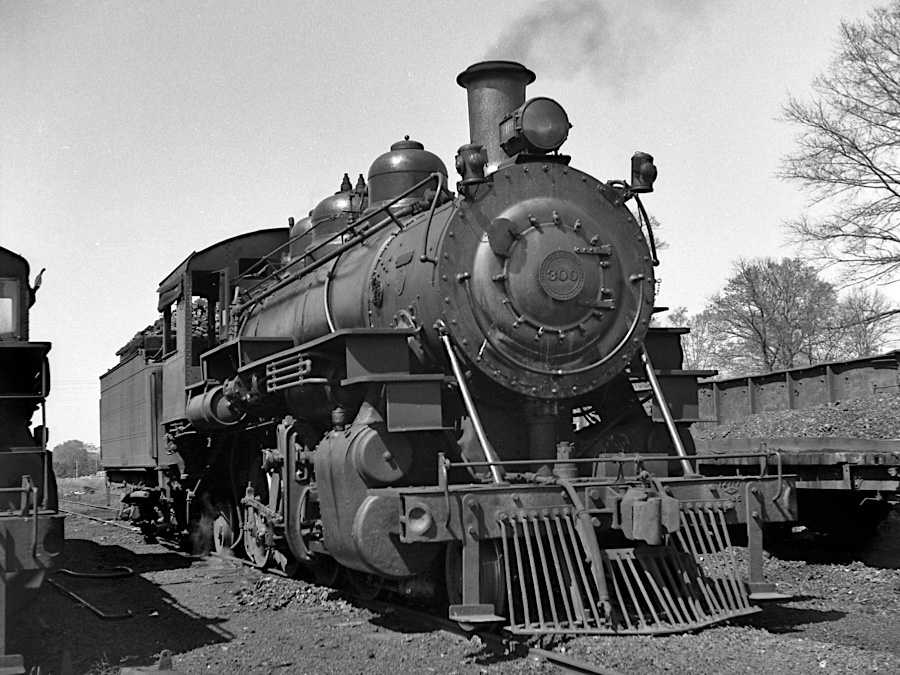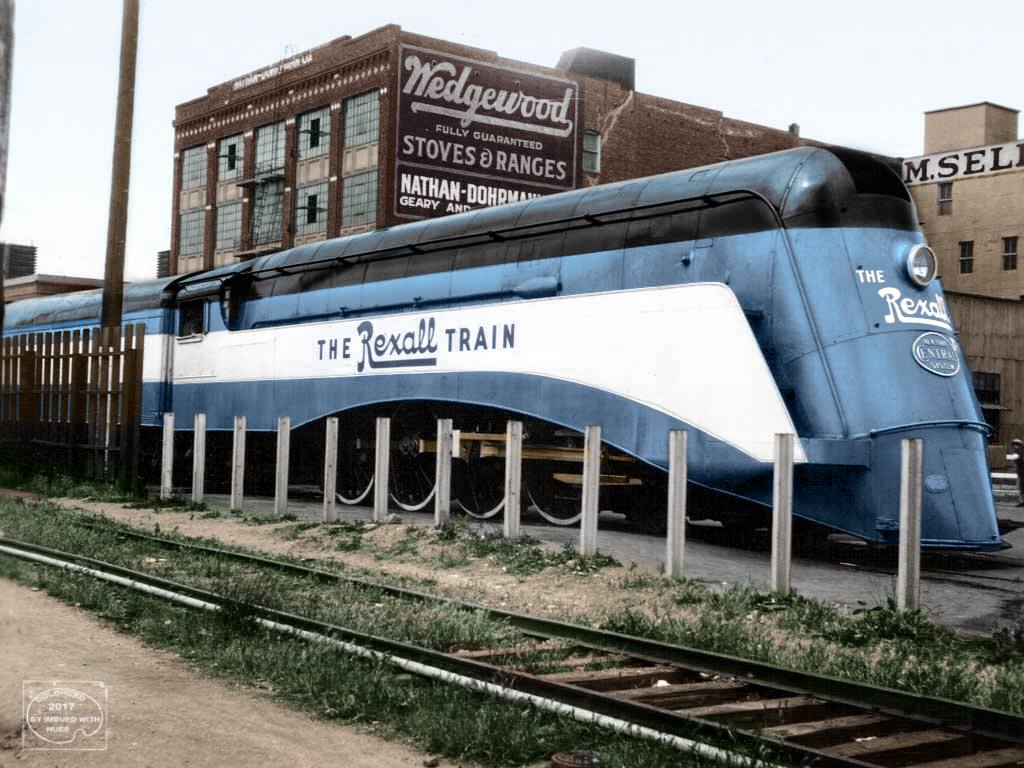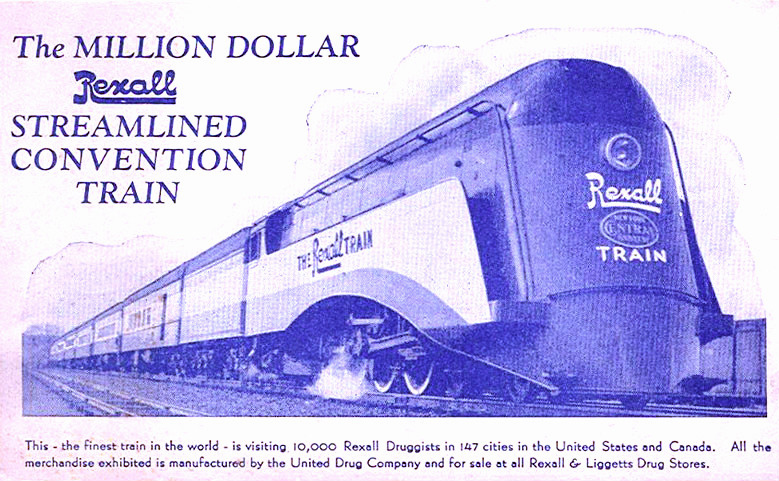The only narrow gauge Mallets were the 36" gauge 2-6-6-2Ts of the Uintah Railway. Founded in 1903, the Uintah Railway was heralded as "the crookedest railway in the States", and it's hard to argue the title. It stretched from an interchange with the D&RGW at what became known as Mack, Colorado east to the Books Cliffs in Utah, and was constructed for the purpose of hauling Gilsonite mined at the Black Dragon Vein in Utah. Twenty-eight miles of track was laid following West Salt Wash Creek upstream to the company town of Atchee, Colorado. From Atchee, six miles of 7.5% grade were required to climb the Books Clifes to Baxter Pass at an elevation of 8,437 feet. From the summit of Baxter Pass, there were seven miles of 5% downhill grade to Wendella, Colorado, followed by twelve miles of 3% or shallower grades down Evacuation Creek to the Black Dragon Mine just west of the Utah border. And that's not even getting into the curvature. At Moro Castle there was a 66 degree curve, and that was after a realignment procedure knocked it down from 81 degrees. Rugged doesn't even begin to describe the territory that the Uintah Railway operated over.
Originally, motive power for the end of the line west of Atchee were a number of Lima 2-truck Shays, while on the east end, they used secondhand 2-8-0s largely purchased from the D&RGW and some intriguing 0-6-2Ts that typically handled the rudimentary passenger service consisting of a locomotive and a single combine. In 1920, the Uintah Railway was taken over by Lucian Sprague, a reclusive railroad executive who would later become known for his dramatic turnaround of the bankrupt Minneapolis & St. Louis. Sprague wanted to eliminate the engine changeover at Atchee and replace the Shays with something faster (geared locomotives typically top out at under 10mph), so he ordered a single saddle-tank 2-6-6-2 Mallet from Baldwin, Uintah Railway #50. It had 42" drivers, 15x22" cylinders, a 210psi boiler and generated 47,000lbs of tractive effort. The single articulated locomotive could move as many cars as two Shay locomotives from Rainbow to Atchee and made the trip in half the time. After some initial modifications, this engine proved to be such a success that in 1928 the railroad purchased a sister locomotive, #51.




The 2-6-6-2s were shown to frequently trail up to 4 water canteens behind them. Since the water in the saddle tanks increased weight on the drivers, which in turn increased traction, the saddle tanks were often used as ballast first and a water supply second. They drew from the canteen cars first, and then used the saddle tanks as a reserve if they emptied those before they could reach a water tank.


Demonstrating their articulation.

#250 at the 66 degree curve at Moro Castle after reduction from 81 degrees.










